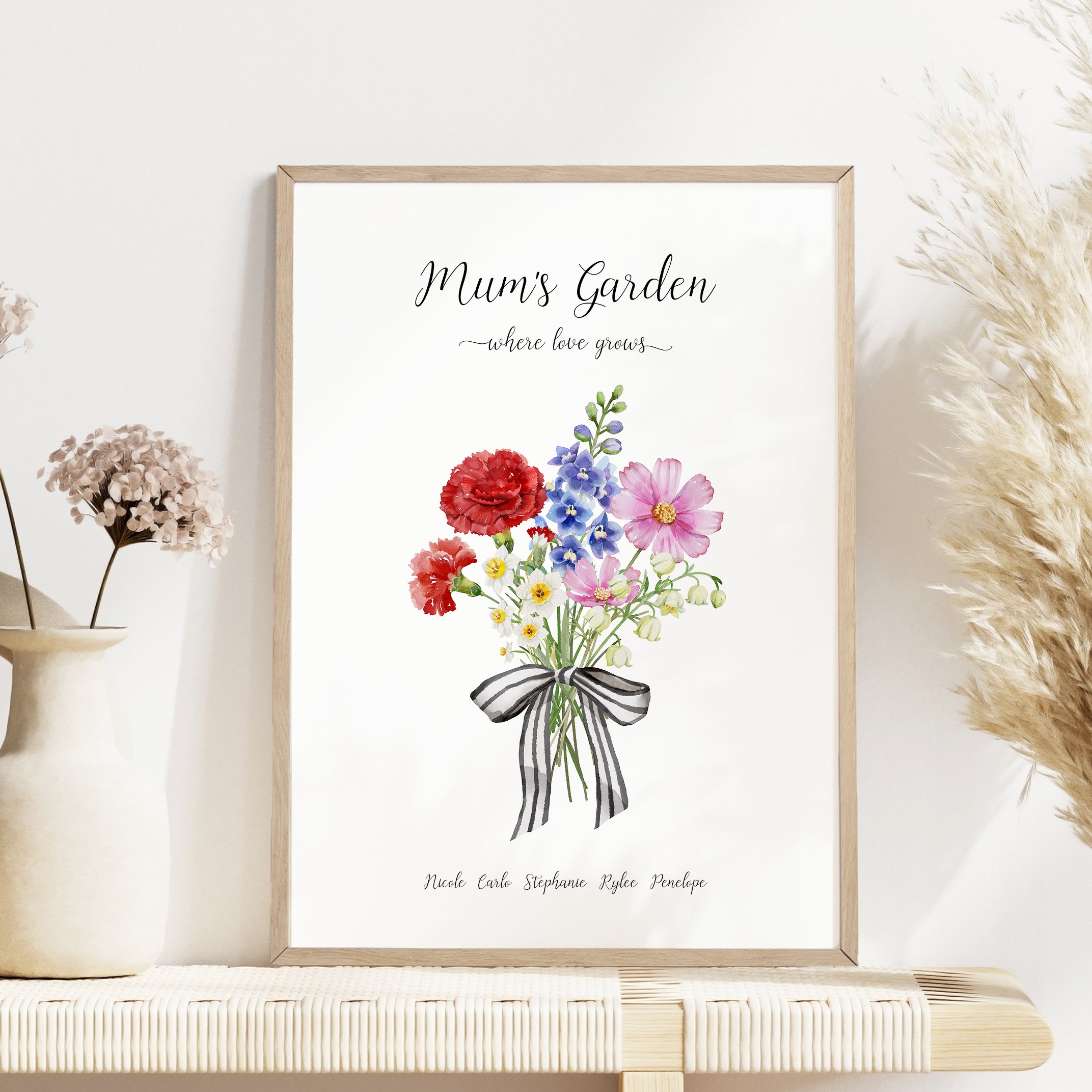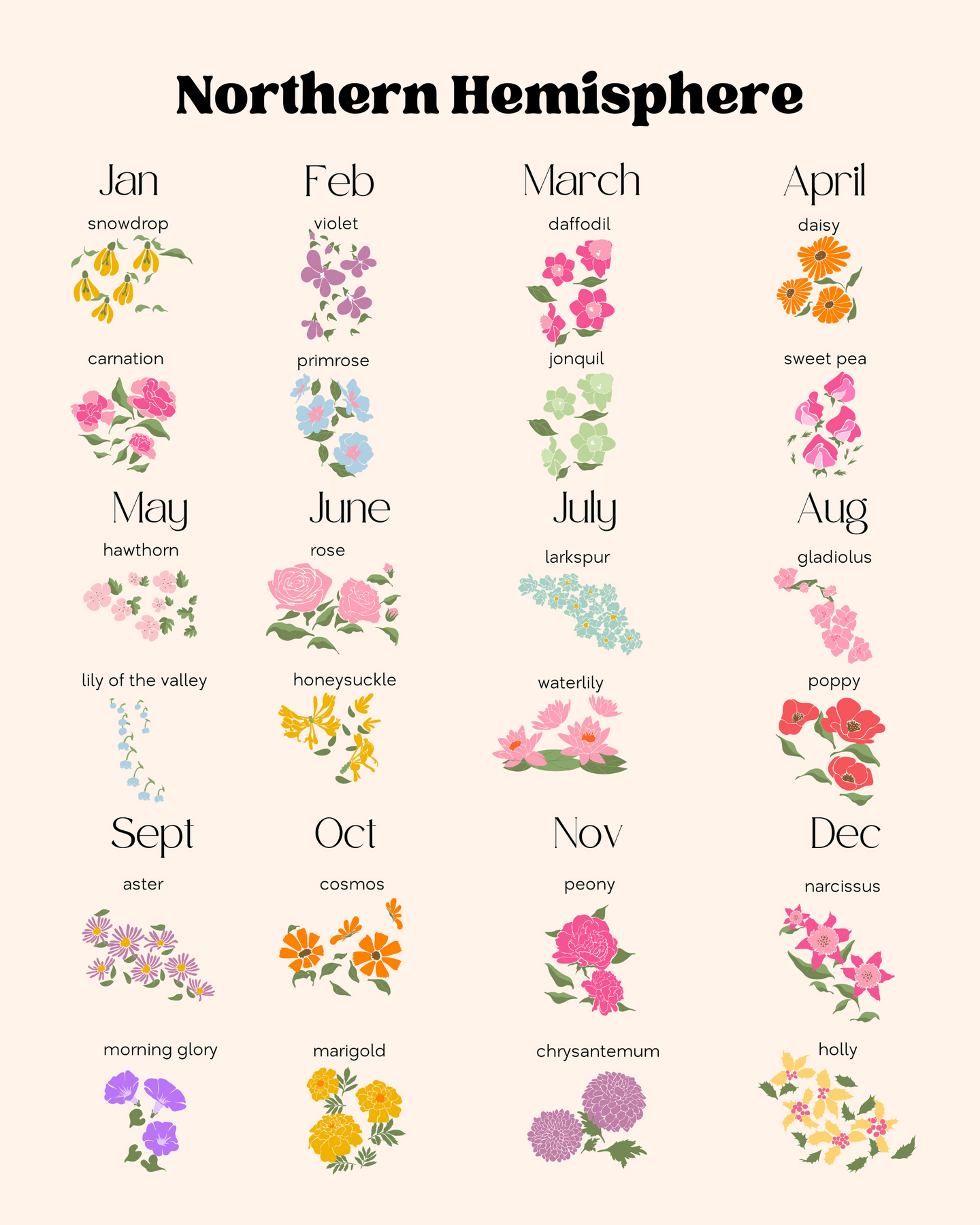The Blooming Family: A Guide to Birth flowers
Flowers have long been associated with birth and new beginnings, and each month of the year has its own special bloom. These birth flowers carry symbolic meanings and are often given as gifts to celebrate birthdays or the arrival of a new baby. In this article, we will explore the fascinating world of birth flowers and their significance, helping you create a beautiful and meaningful bouquet for your loved ones.
January: The Carnation and Snowdrop
January, the first month of the year, is represented by two delicate flowers: the carnation and the snowdrop. Carnations, with their ruffled petals and vibrant colors, symbolize love, fascination, and distinction. Snowdrops, on the other hand, are the first flowers to emerge in the spring, signifying hope and rebirth.

February: The Violet and Primrose
February, the month of love, is associated with the violet and primrose. Violets, with their deep purple hues, represent modesty, humility, and faithfulness. Primroses, with their cheerful yellow blooms, symbolize young love and new beginnings.
March: The Daffodil and Jonquil
March, the month of spring’s arrival, is represented by the daffodil and jonquil. Daffodils, with their bright yellow trumpets, symbolize rebirth and new beginnings. Jonquils, with their fragrant white or yellow flowers, represent desire and affection.

April: The Daisy and Sweet Pea
April, the month of renewal, is associated with the daisy and sweet pea. Daisies, with their simple beauty and white petals, symbolize innocence, purity, and loyal love. Sweet peas, with their delicate fragrance and pastel colors, represent pleasure and gratitude.
May: The Lily of the Valley and Hawthorn
May, the month of blooming flowers, is represented by the lily of the valley and hawthorn. Lily of the valley, with its tiny white bells, symbolizes sweetness, humility, and a return to happiness. Hawthorn, with its fragrant white or pink blossoms, represents hope and supreme happiness.

June: The Rose and Honeysuckle
June, the month of weddings, is associated with the rose and honeysuckle. Roses, with their velvety petals and captivating fragrance, symbolize love, passion, and beauty. Honeysuckle, with its sweet-smelling flowers, represents devotion and affection.
July: The Larkspur and Water Lily
July, the month of summer heat, is represented by the larkspur and water lily. Larkspur, with its tall spikes of colorful flowers, symbolizes an open heart and a desire for laughter. Water lilies, with their elegant white or pink blooms, represent purity and enlightenment.
August: The Gladiolus and Poppy
August, the month of late summer, is associated with the gladiolus and poppy. Gladiolus, with its sword-like leaves and vibrant flowers, symbolizes strength, integrity, and remembrance. Poppies, with their delicate red petals, represent imagination, beauty, and success.
September: The Aster and Morning Glory
September, the month of autumn’s arrival, is represented by the aster and morning glory. Asters, with their star-shaped flowers and various colors, symbolize love, wisdom, and faith. Morning glories, with their trumpet-shaped blooms that open in the morning, represent affection and mortality.
October: The Marigold and Cosmos
October, the month of harvest, is associated with the marigold and cosmos. Marigolds, with their bright orange and yellow flowers, symbolize passion, creativity, and the warmth of the sun. Cosmos, with their delicate pink, white, or purple blooms, represent order, peace, and tranquility.
November: The Chrysanthemum
November, the month of gratitude, is represented by the chrysanthemum. Chrysanthemums, with their diverse shapes and colors, symbolize loyalty, honesty, and compassion.
December: The Narcissus and Holly
December, the month of winter, is associated with the narcissus and holly. Narcissus, with its fragrant white or yellow flowers, symbolizes self-love, admiration, and new beginnings. Holly, with its evergreen leaves and red berries, represents hope, happiness, and domestic bliss.
Creating a Family Birth Flower Bouquet
Now that you know the birth flowers for each month, you can create a unique and meaningful bouquet for your family or friends. Consider combining the birth flowers of each family member to create a personalized arrangement that celebrates their individual personalities and their connection to one another. You can also use the symbolic meanings of the flowers to convey a special message or sentiment.
When arranging your birth flower bouquet, remember to consider the colors and textures of the flowers, as well as the overall shape and size of the arrangement. You can add greenery and other complementary flowers to enhance the beauty and fragrance of your bouquet.
A birth flower bouquet is a thoughtful and heartfelt gift that will be cherished for years to come. It is a beautiful way to celebrate birthdays, anniversaries, or the arrival of a new baby, and it is a lasting reminder of the love and connection that binds families and friends together.
family birth flowers
